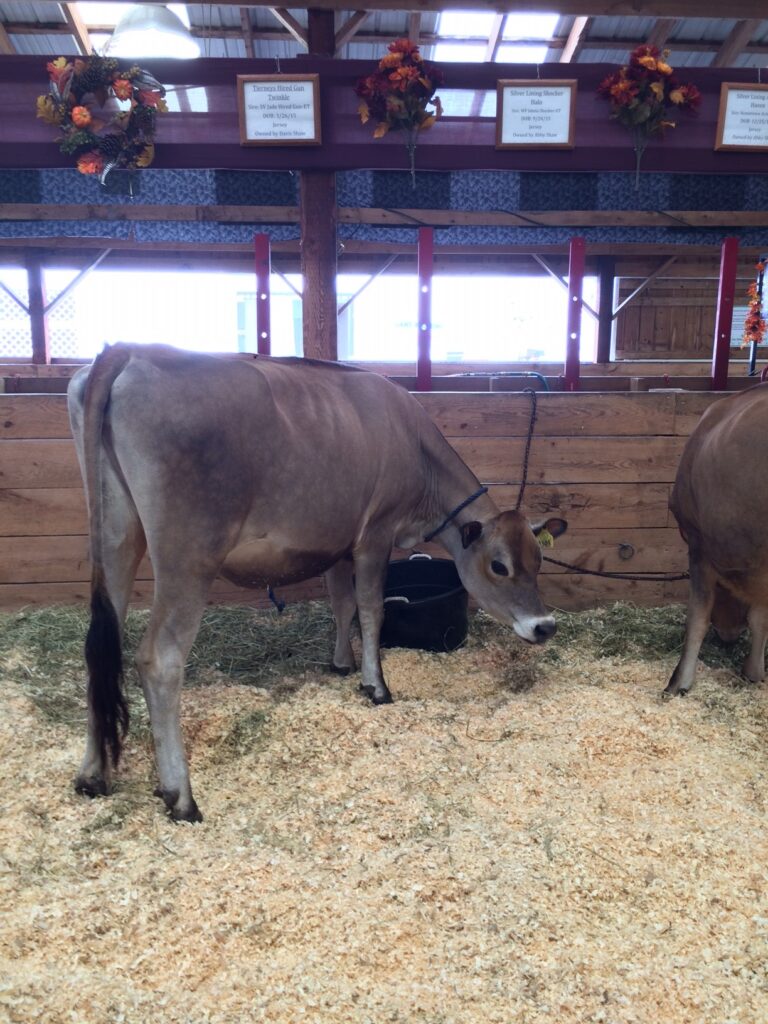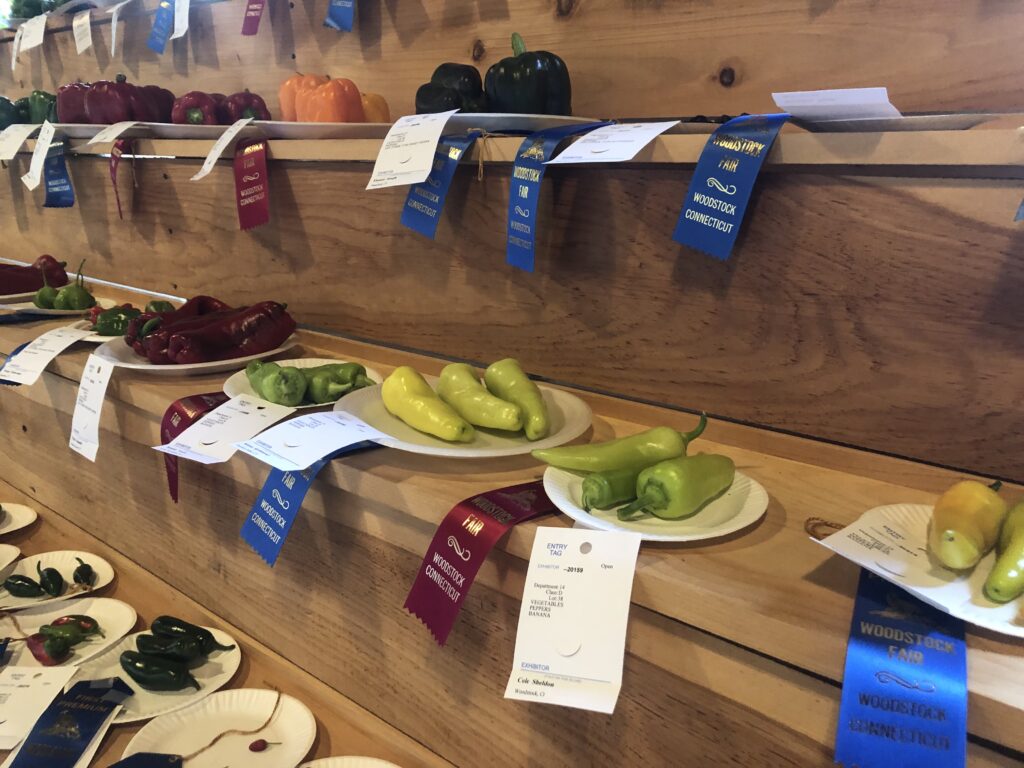For more than two centuries, agricultural fairs have offered a way for Connecticut residents to connect with their local farms and find some weekend entertainment. This tradition is still going strong today, with fairs starting in midsummer and continuing well into the fall.
Agricultural fairs originally started as a way for farmers to showcase their livestock, harvested crops, and baked goods. While fairs have grown to include a wide range of other entertainment, from live music and food vendors to carnival rides and games, agricultural displays continue to be at the heart of these events. They offer a way for visitors to learn more about their local farms, see what agricultural products are grown and raised in Connecticut, enjoy some CT Grown treats, and take home some locally produced food. For farmers, fairs are a great way to meet with one another and with visitors, and to showcase their expertise.
Here’s a look at the different fairs that take place in Connecticut each year, and some of the ways you can learn more about local agriculture in a fun-filled environment.
Types of agricultural fair

Country fairs: Most country fairs in Connecticut have become mainstays in the community, dating back decades if not centuries. These fairs usually take place over several days, offering a full schedule of agricultural contests and shows alongside other entertainment. They are sometimes put together by local community organizations, or to raise funds for a certain purpose.
4-H fairs: 4-H is a youth development program overseen by the University of Connecticut Extension. What makes these fairs unique is that they are organized by their young members to showcase local agriculture.
Grange fairs: The Grange was originally founded as an agricultural advocacy group. While it has evolved to address the needs of non-farm families and a wide range of community needs, agriculture continues to be an important theme in many of its events and activities. Grange fairs are organized by local granges and are single-day events.
Learning at the fair

Agricultural fairs often set up demonstrations to show farm work in action. For example, farmers may show how to milk cows or shear sheep, or set up a hatchery so you can watch chicks emerge from eggs.
Fairs may schedule presentations on topics such as farming, food preparation, and garden care. There are also educational events aimed at children to strengthen their awareness of where their food comes from and how it is produced.
Like a farmers’ market, an agricultural fair offers you the opportunity to meet and interact with Connecticut’s farmers and agricultural producers. You can pick up useful information on how to properly store produce to make it last longer, including methods such as canning, pickling, or creating value-added foods; what nutritional benefits you can find in different types of food; how to create recipes that can incorporate CT Grown products; how farm animals are cared for; and what practices farmers use when raising their crops.
Fairgrounds may include museums that showcase agricultural history, including displays of antique equipment and information on a region’s farming history. These museums offer an interesting glimpse into how farming has influenced Connecticut, and how it continues to evolve.
Shows and contests

The wide range of shows and contests at Connecticut agricultural fairs offer enduring appeal, inviting farmers and the general public alike to demonstrate their skill at raising products and using them in recipes. Competitions include both children’s and adult divisions, and pick out winners in categories such as fruits, vegetables, eggs, sauces, preserves, syrups, baked goods, fiber products, and flower arrangements. The contests have grown to include a variety of non-agricultural products as well, such as sewn goods and photography.
Judges consider a set of unique characteristics for each category. For example, preserves are judged not only for their flavor, but also for factors like their color, clarity, texture, and presentation. Vegetable contests take qualities like size, shape, color, presentation, and arrangement into consideration.
Animal exhibitions and shows are a popular component of agricultural fairs, as they let visitors see these creatures up close and in action. Commonly featured animals include cows, goats, chicken, sheep, swine, rabbits, and horses.
Fairs set rules to ensure that animals are in good health and properly cared for, and competitions are based on factors like breed, age, and weight class. There are also several contests demonstrating the strength of farm animals such as oxen or horses.
Offbeat fun
Fair organizers love to come up with quirky contests and encourage visitors to take part. One attraction that’s been growing in popularity in recent years is “vegetable racing.” Similar to pinewood derby competitions, vegetable racing has participants pick out a locally grown vegetable, add wheels and other modifications, and try to get the fastest time down a curved track.
Giant vegetables have long been a favorite feature of agricultural fairs, with awards given to farmers who are able to tip the scales with the heaviest pumpkins, tomatoes, gourds, watermelons, and more. While it’s obviously impractical to bring such giant specimens to market, they’re still an impressive demonstration of how Connecticut farmers have the knowledge to sow, tend, and harvest their crops.
Other events that can be found at Connecticut’s agricultural fairs include obstacle courses for livestock, corn shucking contests, racing pigs, and hay bale throwing competitions.
Upcoming fairs
A full list of upcoming agricultural fairs in Connecticut can be found on the CT Grown calendar, or on the Association of Connecticut Fairs website. This organization also offers season passes allowing the holder and one guest to get into all participating events during the year’s fair season.